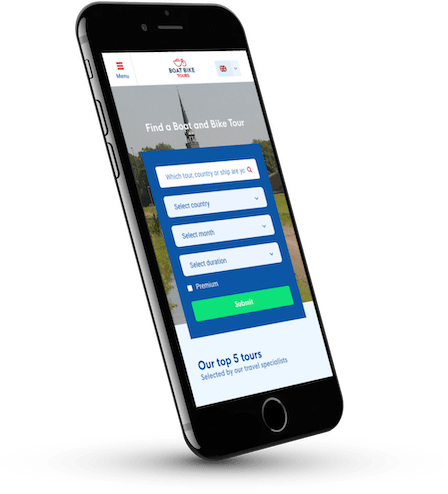While the Netherlands is known for being bike-friendly, Utrecht takes this to the extreme.
The medieval core of this city was a historic intersection of the Netherlands’ Protestant north and Catholic south, it’s simply crammed with Golden Age townhouses arrayed around its stately main canals — the Oudegracht and Nieuwegracht — and it’s best explored on bikes.
See all tours with Utrecht

Cyclists flow in effortless streams along narrow, cobbled streets which follow wharves created the best part of a millennium ago (when no-one thought of planning for cars).
Back when the Rhine River flowed further north than it does now, a port sprang up, with trading boats bringing riches to the merchants and religious nobility of Utrecht. This 13th-century port’s canal wharves and cellars hosted lively markets selling wine, linen, cattle and crops and were the foundations of a vital and flourishing urban economy.
And although you’ll no longer hear yelling vendors, these unique canals — the Netherlands’ only ones with wharf terraces touching the water — are now home to a different kind of life.
Utrecht has 732 wharf cellars which are connected to the canals through tunnels dug by merchants, who grew weary of hauling their wares up the quays and down into house cellars. They now host anything from a Dutch pancake (pannenkoeken) restaurants and bars to boutique hotels, while the wharves are packed with terrace diners in the summer months.

Perhaps stop by Stadskasteel Oudaen: a 12th-century defensive tower house which withstood cannonball barrages during the uprising against Utrecht’s Spanish rulers in 1577.
Right on the Oudegracht, it’s now home to a restaurant, grand cafe, theatre and Utrechtse Stoombierbrouwerij Oudaen, a cellar brewery making wheat beers, pilsners and bock biers.
Utrecht’s waters are truly its heritage — it traces its roots back to AD47 when the Roman emperor Claudius created a northern empire border by building fortresses all along the Rhine. One of these was built on a ford and named “Traiectum”, a name which eventually evolved into “Utrecht” in the language of the area’s pagan tribes.
It was built on the site of today’s Dom Square and the 112.5-metre Dom Tower, which is an unmissable landmark if you’re lost and an unbeatable spot for looking out over the Lowlands. Here, the 16th-century Dutch Revolt led by Willem van Oranje saw the Protestant northern provinces sign the Union of Utrecht and unite against the Spanish Catholics, birthing the Republic of the Netherlands — and the Dutch obsession with the color orange.

Sundays in Utrecht are still peppered with bell peals from the many remaining churches, one of which has been turned into an impressive Belgian beer cafe. Another, Janskerk, is illuminated by night and as you stroll by, an alleyway of spectral trees lit by time-controlled spotlights comes to life, accompanied by wind chimes in the darkness.
The installation is part of the Trajectum Lumen light art trail: a nocturnal tour through the old city. Guided or self-guided tours are available and it’s a magical feeling when you stumble across the installations by surprise. Some are obvious, some require a little seeking.
For a different perspective, you can follow the light trail by canoe or whisper boat and many of the illuminations are best seen from the canals, mirrored in velvet black waters. Daytime cruises depart hourly and are also highly recommended — Utrecht’s canals are the best place to start if you want to understand a city that grew from water trading dominion.

You can visit Utrecht as part of the following boat bike tours:
• Southern Tour aboard the De Amsterdam or De Nassau
• Amsterdam to Bruges (and vice versa)
Plan your trip


